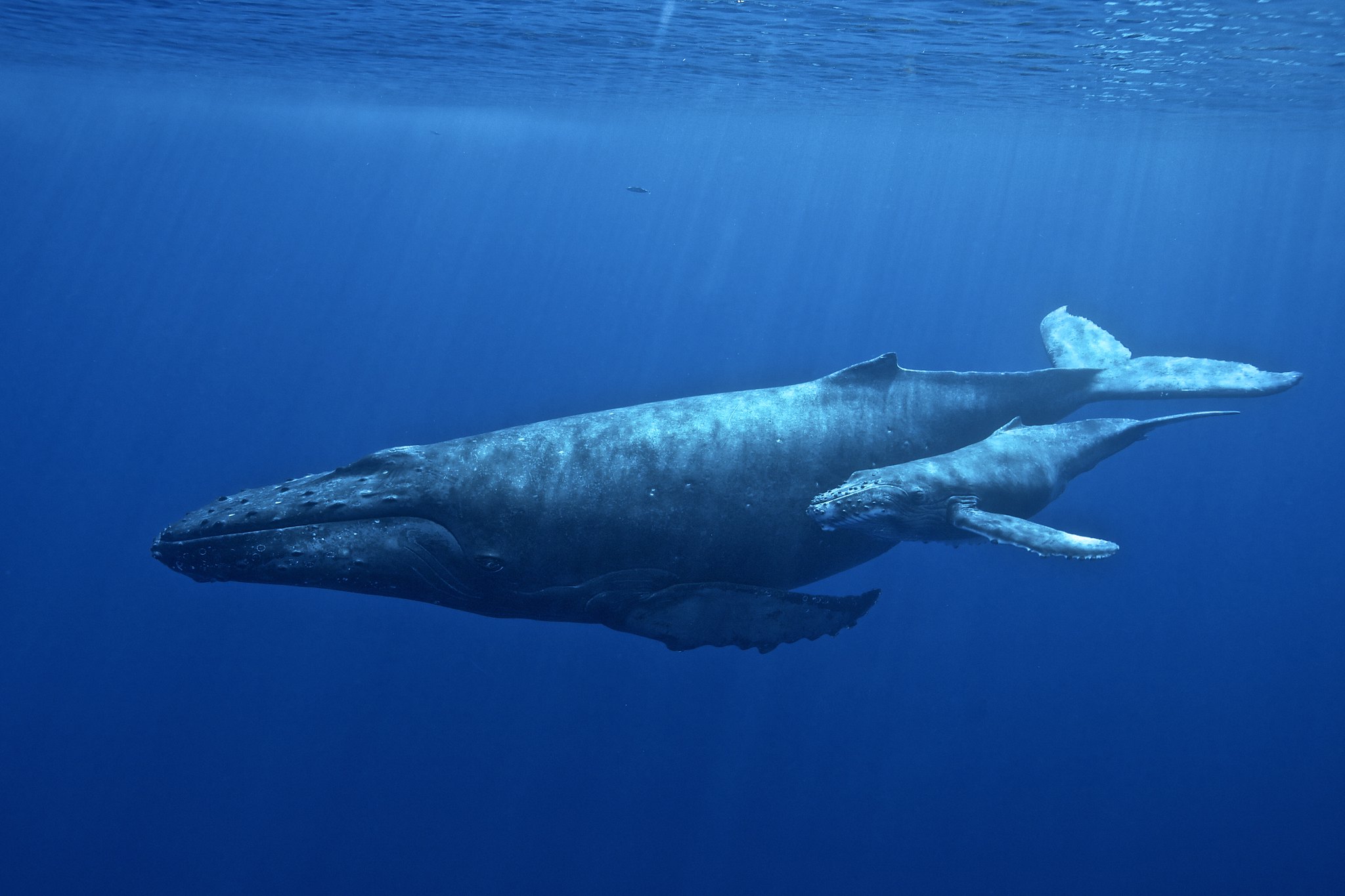
Humpback Whale Birth Witnessed for the First Time By Scientists in Hawaiian Islands Humpback Whale National Marine Sanctuary
Incredible Animal Journeys, a docuseries that premiered on National Geographic in November 2023, features a first for wildlife filmmaking in episode 1, “Ocean Odysseys” – the never-before-filmed birth of a baby humpback whale, in the waters of Hawaiian Islands Humpback Whale National Marine Sanctuary.
[All footage was taken under the authority of the National Marine Fisheries Service MMPA/ESA Permit 22750.] For more than three decades, Hawaiian Islands Humpback Whale National Marine Sanctuary has been home to one of the world’s most important populations of humpback whales. More than half of the North Pacific humpback whale population utilizes these waters as their principal breeding and calving wintering ground. The whales undergo one of longest migrations in the world each year to return to the safe haven of the sanctuary’s waters to give birth and raise their young before making the return voyage to their feeding grounds in Alaska.
Humpback whales serve as a sentinel species that reflect changes in the health of ocean ecosystems. The North Pacific population of humpback whales has rebounded with the end of commercial whaling and the increased public focus on conservation since the Marine Mammal Protection Act was enacted 51 years ago and the Endangered Species Act 50 years ago. However, this iconic marine mammal is still vulnerable to threats like climate change, ship strikes, noise pollution, and entanglement in marine debris (as shown in the National Geographic episode).
“Achievements in scientific research and wildlife filmmaking like this humpback whale birth play a pivotal role in advancing our understanding of species, particularly within specific populations…The vulnerability of mothers during childbirth, especially among mammals, underscores how important sanctuaries are, free from interference. Wildlife filmmaking assists in scientific studies and conservation by revealing secrets of the natural world, and brings images and stories that inspire wonder, curiosity, and adoration. These connections between the public and nature play a vital role in safeguarding our precious ecosystems,” said Connor Gallagher, a member of the film team for the series.
Marine mammal conservation is a key pillar of the National Marine Sanctuary Foundation’s mission to safeguard species and the places they call home. The Foundation supports critical research and conservation efforts, including awarding grants to the Hawai’i Marine Mammal Consortium, the University of Hawaii and Manoa – Hawaii Institute of Marine Biology, the Pack Marine Mammal Laboratory of the University of Hawaii at Hilo, and the Whale Trust (University of California-Santa Cruz), to support critical research on humpback whales in Hawaiian Islands National Marine Sanctuary.
Across the sanctuary system, the Foundation hosts whale disentanglement trainings to train professionals like the entanglement team led by Ed Lyman, NOAA Whale Response Coordinator, seen in Episode 7, “Behind the Journey.” We also work collaboratively with fishermen on fishing gear innovations to reduce entanglement risk and identify whale use areas to reduce co-occurrence with the fishing industry and reduce mortality from ship strikes.
In January, February and March, the Foundation coordinates the annual Ocean Count, a community citizen science project in Hawaiian Islands Humpback Whale National Marine Sanctuary which provides a snapshot of humpback whale sightings from shore and promotes public awareness about the species, the sanctuary, and shore-based whale watching opportunities.
